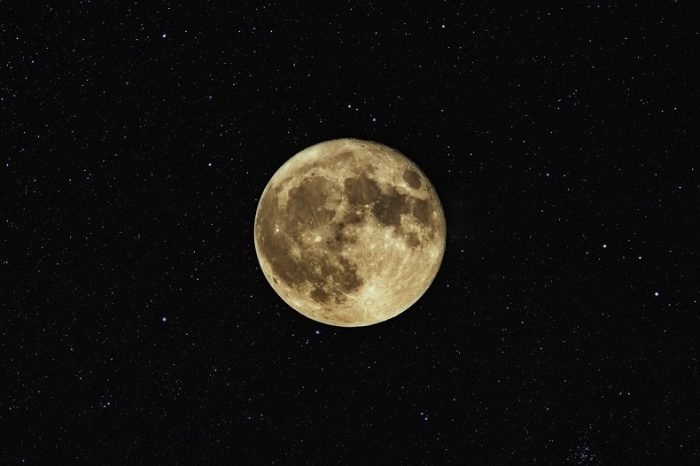Even in the spiritual and new age realms, we are not immune to the feeling of fear or of losing control; unfortunately, for some, the full moon can be filled with worry of both of these things.
We are creatures that can easily be swayed by others opinions. We are also humans who love to know we are part of a tribe, supported by a greater experience and also connected to a higher knowing. As well, we thrive best when we can remain equally grounded and uplifted at the same time.
Perhaps then, balance should be the aim for humanity. Balance also is key to a mindful practice and life. In Buddhism, the Sanskrit term for balance is samata, meaning “one virtuous quality to counterpoise another.”
Buddha might have said that it was his search for balance that led him to enlightenment all those centuries ago under the Bodhi tree. He used mindfulness to face the things that frightened him internally and externally, and he befriended them instead.
Does this sound like a practice some of us are in need of around the full moon?
Mindfulness is a term loosely used by many in meditation, yoga, and spirit-based traditions. What it means is that we become compassionately aware of ourselves in this moment—our feelings, situations, experiences, other people, and also environmental happenings. After becoming aware, we hold space for all of it without turning away in an immediate reaction or judgement.
What messages do we regularly get about the full moon? How do we talk about it, think about it, and feel toward it? In some history and lore, the full moon was an affair talked about in a way that may have put roots of fear into us at a young age—but why?
Werewolves and spirits and even gods and goddesses were said to go mad at this time of greater lunar reflection. Looking back to the Roman times, their name for the moon, Luna, became our current day root for “lunatic” and “lunacy.”
Selenophobia coming from the Greek word, seleno, meaning moon, is a persisting phobia of the moon—fear of moonlight and of nightfall. Seen as an anxiety disorder, this dread can become consuming for certain individuals.
In research around selenophobia, this disorder is sometimes thought to be due to traumatic experiences in childhood. Fear, as we know, builds when we hear stories that support it. As children, our young psyches may have been susceptible to the fables we were told.
Many of us were taught that evil things come out under the light of the full moon, and perhaps there’s a smidgen of this story that we have all hung onto.
One method for overcoming anxieties is safe and regulated exposure to the things that scare us—and as we realize we remain unharmed when we face them, our anxiety of them can often shift.
Environmental and celestial cycles do affect us internally, so added on top of our early fear of the full moon, we also notice changes in ourselves and each other around this time that can disturb us. The thing, though, is that we and our environment are always changing—so how do we make peace with a monthly occurrence that, in its essence, has an unbalancing effect?
We counteract the lore and the reality of more intense nights of moonlight with a little radical shift of how we approach them. As mindful practitioners, we can accept, allow, and observe, rather than reacting. We can learn to embrace the full moon.
Mindfulness practice for the full moon.
Facing the moon:
Find a spot this full moon (preferably one where we can see Luna or her bright light), and choose to become still; observe, experience, and embrace the moon in its fullness. Sit, cross-legged or on a chair, and just notice your breathing. Lower the eyes (or close them completely) and become aware of what is happening in our own inner world. Is our internal dialogue busy? Are we anxious or afraid? Or maybe are we feeling blank, or dull, or perhaps peaceful?
Perhaps there is fear coming up that we cannot handle intensity at this time? Try to remain gentle. We are simply sitting and observing. All is okay.
See the full moon now in your mind’s eye. Imagine you are facing it directly. Invite in any support that feels right, perhaps a goddess or god, guardian angel, or maybe Buddha (or another teacher or someone we truly love). Allow them to hold this space with us. Allow support to be with us while we face something we may feel uncomfortable toward…breathe.
Observe, without judgement, how the moon feels. If we are able, let’s bring a subtle smile to our lips. Imagine embracing the full moon now with this stillness we have created.
Do you feel more calm? Can you see now that what we were scared of might not have been true?
As in meditation and yoga, at the time of a full moon, we seek to find equanimity. Let’s try something mindful this next full moon, knowing that we don’t always have to react in the ways we may have become habitually conditioned to.
Instead, we might befriend these organic cycles in their natural peace.
~









Read 0 comments and reply